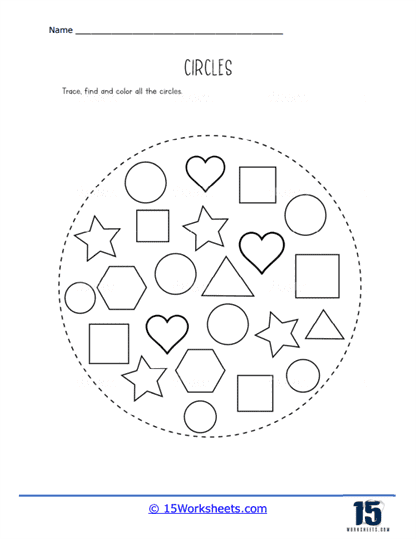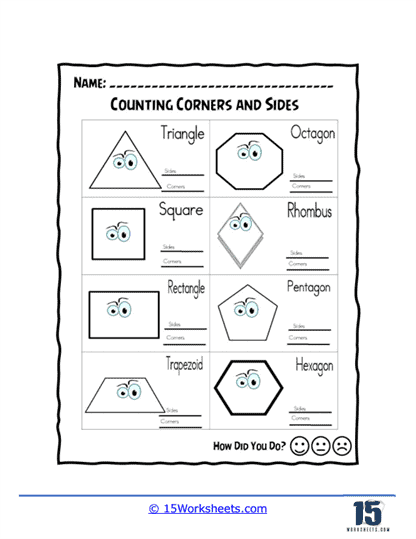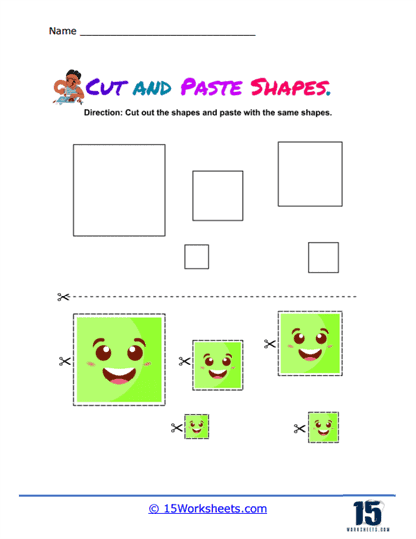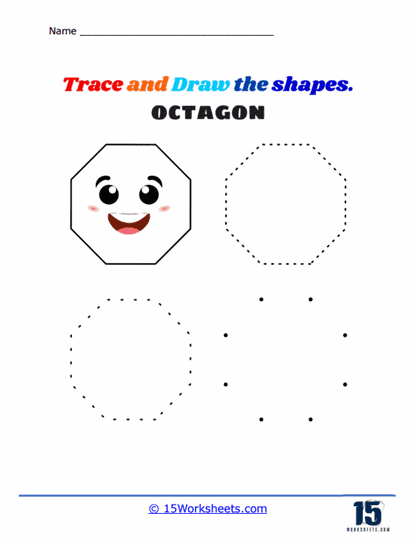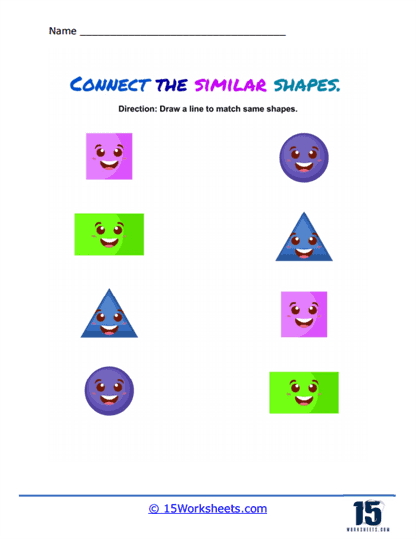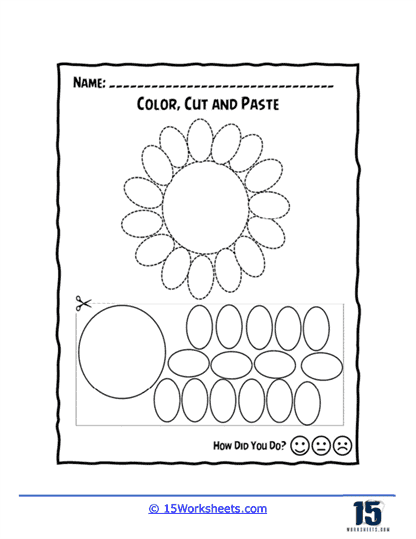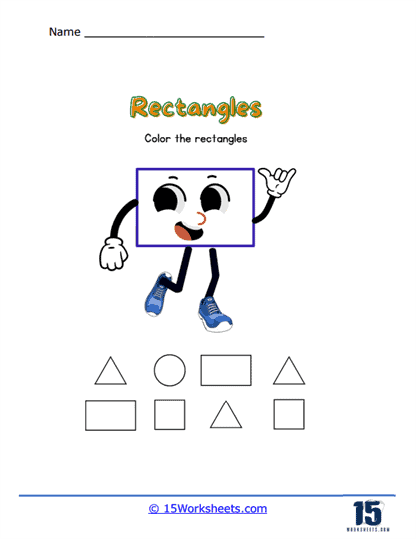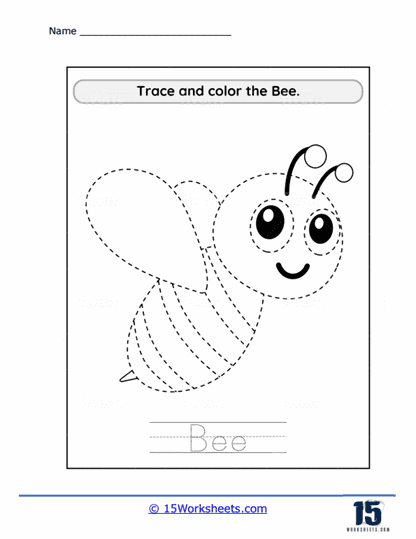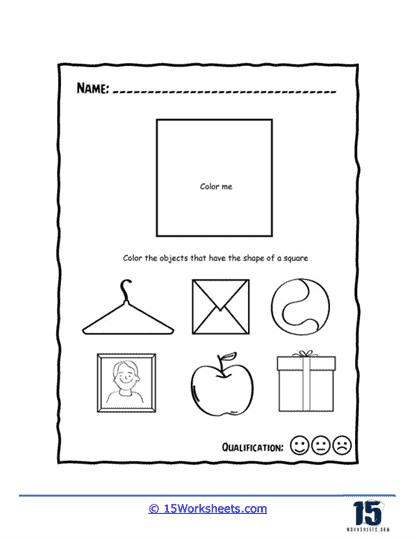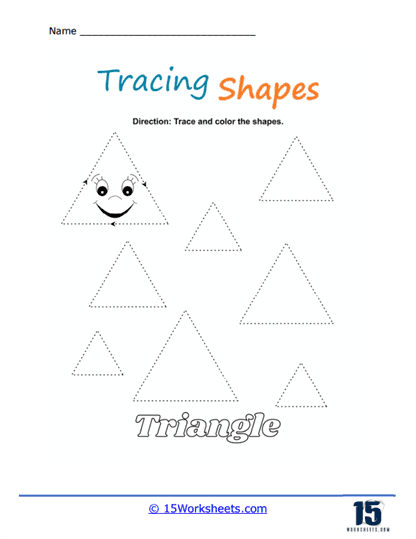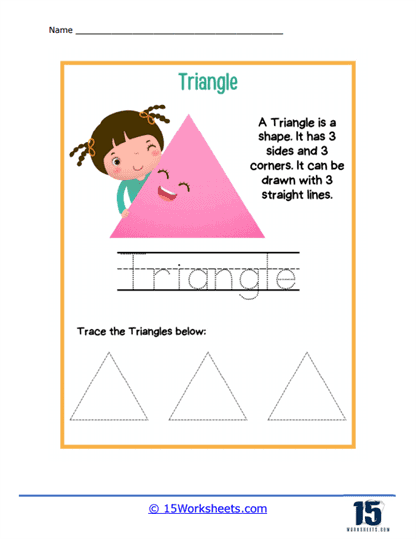Shapes Worksheets
About These 15 Worksheets
These worksheets are designed to help young children, typically aged 3 to 5, learn about and recognize basic shapes. These worksheets include activities that involve tracing, coloring, matching, or identifying shapes. They can be a valuable resource for teachers and parents to introduce and reinforce shape recognition and understanding in a fun and engaging way.
These worksheets begin by introducing students to the names of basic shapes such as circle, square, triangle, rectangle, and so on. We show them examples of each shape and explain their defining characteristics, such as the number of sides and angles.
Some common shapes covered in preschool shapes worksheets include:
- Circle
- Square
- Rectangle
- Triangle
- Oval
- Diamond (or rhombus)
- Pentagon
- Hexagon
- Octagon
These worksheets also cover more complex shapes, depending on the curriculum or the child’s ability. Using these worksheets, children can develop their fine motor skills, spatial awareness, and problem-solving abilities. They also form the foundation for later learning about geometry, patterns, and other mathematical concepts.
Why Are Shapes Important At This Level?
Teaching preschoolers geometric shapes is a critical step in their learning journey and requires a hands-on, interactive approach. This is not merely about teaching children to identify circles, squares, triangles, and rectangles. Instead, it involves them understanding the properties of these shapes, recognizing them in various forms, and applying this knowledge in everyday life.
Begin by introducing simple shapes. Preschool children are usually already familiar with shapes like circles and squares from their environment, but formalizing this understanding is crucial. Use items in the classroom or home like a round clock, square window, or circular plate to discuss these shapes. “See this clock? It is round like a circle. Can you find something else that is a circle?” This helps the child associate everyday objects with particular shapes, making the concept tangible.
Next, introduce the concept of sides and corners, starting with squares and rectangles. Utilize wooden blocks or cardboard cut-outs and let the children touch and count the sides and corners. For example, “This is a square. It has four sides, and they are all the same length. Can you count the sides with me? One, two, three, four. Now let’s count the corners. One, two, three, four.” For a rectangle, you can emphasize how it also has four sides and corners, but the sides are not the same length.
After mastering squares and rectangles, proceed to introduce triangles. These shapes can be a bit more challenging for preschoolers because they’re less common in their environment and have fewer sides. Use the same tactile and verbal process to explain triangles.
In each stage, use art and craft activities for hands-on learning. Encourage the children to create their own shapes using clay, or have them trace and color shapes on paper. This practice allows them to internalize the shape’s properties while enhancing their fine motor skills.
Remember to engage children in sorting activities. Create a simple game where children sort various items based on their shapes. This will allow them to apply their newfound knowledge.
You should also introduce shape-themed storybooks. Stories are a fantastic way to make abstract concepts more concrete. Books like “The Greedy Triangle” by Marilyn Burns, or “Mouse Shapes” by Ellen Stoll Walsh, can be used to create a fun and engaging environment for learning shapes.
Throughout this process, remember to practice patience and repetition. Learning takes time, and each child will grasp these concepts at their own pace. Reinforce their learning by consistently discussing and pointing out shapes in daily life, from the bread slices at breakfast to the triangular roof of a house seen during a walk.

